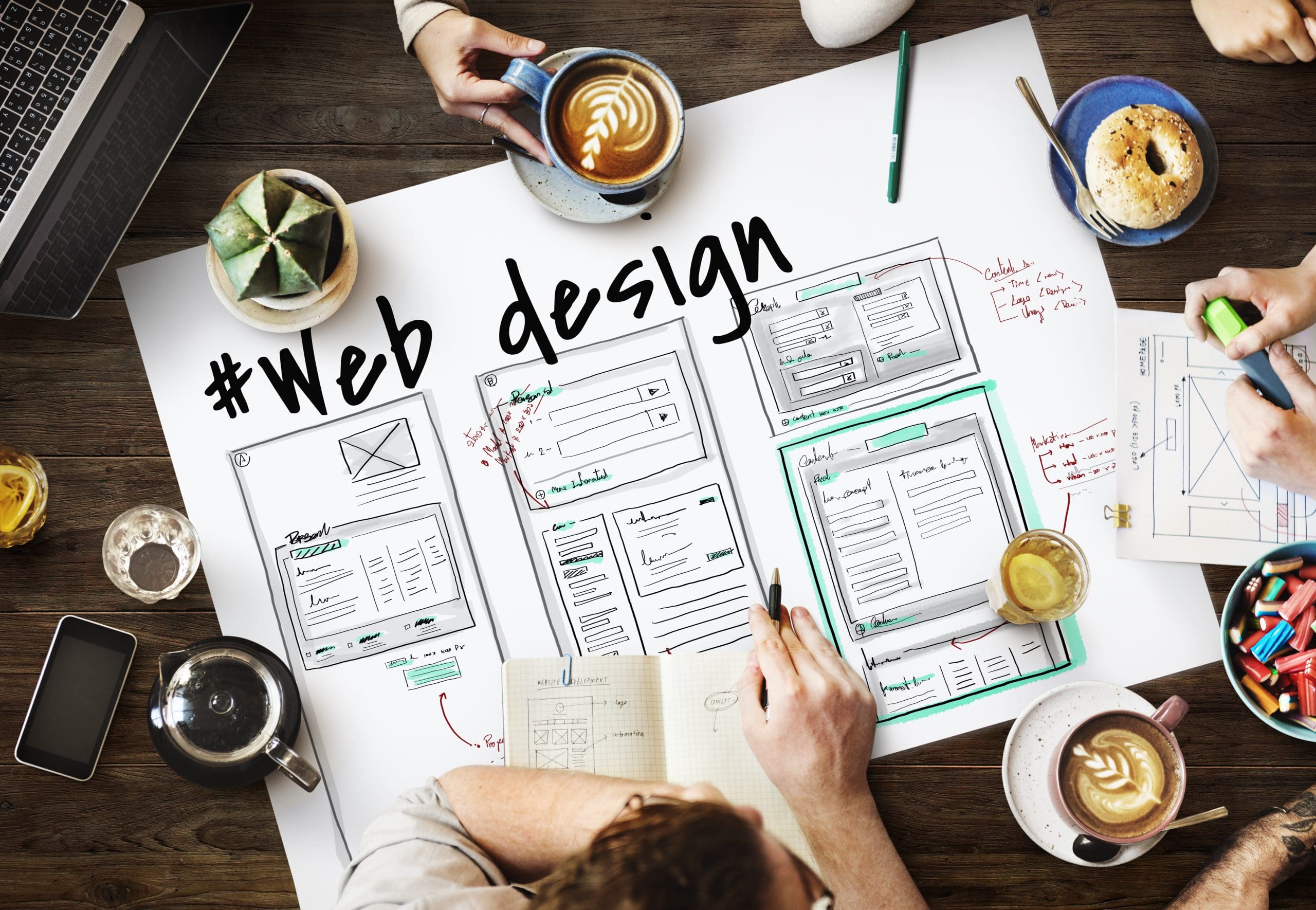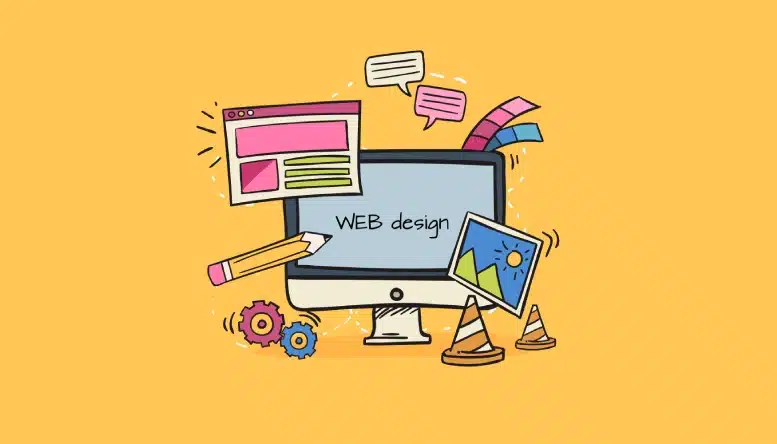Why optimized websites matter for every agency for web design client
Discovering Innovative Fads in Web Design for Modern Companies
The landscape of web design is continuously progressing, showing the dynamic requirements of modern-day services. Recent trends highlight a choice for minimalism, bold typography, and engaging interactivity. Business progressively prioritize user experience via mobile-first concepts and customized web content. In addition, a concentrate on sustainability is acquiring grip. Understanding these trends is crucial for businesses aiming to stick out in a jampacked marketplace. What effects do these shifts hold for the future of electronic engagement?
Accepting Strong Typography
Vibrant typography has become a defining component in contemporary web design, capturing interest and sharing messages with striking clearness. This fad prioritizes visually impactful message that enhances user interaction and brand name identification. Designers often utilize oversized font styles and one-of-a-kind fonts to create a hierarchy, directing visitors via web content flawlessly.
The critical use of vibrant typography permits effective storytelling, enabling brands to communicate their values succinctly. It serves not just visual objectives yet also functional ones, as it boosts readability throughout tools and display sizes.
As web sites compete for user interest, strong typography sticks out in a saturated electronic landscape. Its versatility makes it possible for designers to experiment with contrasting shades and formats, better magnifying its performance. Ultimately, embracing vibrant typography represents a change in the direction of even more communicative and meaningful web design, fostering a much deeper link between brands and their target markets.
The Increase of Minimalist Layout
As digital environments become increasingly cluttered, the rise of minimal design offers a rejuvenating alternative that focuses on simplicity and performance. This style approach strips away unnecessary aspects, permitting content to take spotlight. By concentrating on tidy lines, adequate white space, and a limited shade combination, minimalist layout boosts user experience and boosts navigation.
Companies embracing this fad aim to share their brand message plainly and properly, cultivating a sense of tranquility and quality. The absence of diversions aids users concentrate on important information, leading to improved involvement and conversion prices. Additionally, minimalist layout straightens well with mobile-first strategies, making certain that internet sites continue to be available and easy to use throughout numerous gadgets.
Inevitably, the rise of minimalist style mirrors a more comprehensive shift in the direction of focusing on user requirements and choices, making it a powerful device for contemporary businesses aiming to make a lasting impact in the digital landscape.
Immersive Animations and Interactivity
While lots of web designers accept minimal aesthetics, another compelling trend gaining grip is making use of immersive animations and interactivity. This technique enhances user interaction by developing fascinating experiences that draw site visitors into the material. Developers employ vibrant components such as animated histories, scrolling impacts, and interactive infographics to connect intricate concepts in an accessible manner.
These animations not only provide visual interest however additionally guide customers via the navigating procedure, making interactions much more instinctive. For example, float impacts and animated changes can motivate customers to check out better, resulting in boosted time invested in the website.
This trend lines up with the broader movement in the direction of storytelling in internet layout, where computer animations serve as narrative tools that share brand name messages properly. By integrating immersive animations and interactivity, organizations can differentiate themselves in a congested online landscape, inevitably boosting user satisfaction and brand name commitment.
Mobile-First Style Principles
Mobile-first style concepts highlight prioritizing user experience by guaranteeing web sites work seamlessly on smaller displays. This method includes responsive format techniques that adapt to different gadget sizes while keeping visual integrity. Additionally, it concentrates on touchscreen navigation design, boosting functionality for mobile individuals.
Prioritizing User Experience
Exactly how can developers properly focus on user experience in a progressively mobile-centric world? Stressing mobile-first layout principles is necessary, as customers mostly engage with sites with mobile phones. This strategy motivates developers to enhance content, ensuring it is accessible and easily available on smaller screens. Secret techniques include streamlining navigation, lessening tons times, and using touch-friendly elements that boost interactivity. In addition, focusing on understandable typography and user-friendly designs can greatly improve user satisfaction. Developers must continually gather user feedback to fine-tune their strategies, adapting to evolving user needs and preferences. By concentrating on these elements, companies can develop an engaging digital experience that promotes loyalty and drives conversions, inevitably aligning with the assumptions of today's mobile users.
Responsive Layout Methods
Designers embrace receptive format strategies to develop adaptable and flexible internet experiences that accommodate various screen sizes. This strategy focuses on mobile-first design principles, making sure peak functionality on smaller devices prior to scaling up for bigger displays. By using fluid grids, adaptable photos, and media inquiries, designers can maintain a cohesive aesthetic identification across all platforms. This method not only boosts user interaction however additionally boosts internet search engine rankings, as mobile-friendly sites are preferred by search formulas. Additionally, responsive designs allow companies to get to a more comprehensive target market, accommodating individuals on desktop computers, smartphones, and tablets alike. Generally, executing these methods is essential for modern web design, ensuring that organizations continue to be competitive in a knockout post an ever-evolving digital landscape.
Touchscreen Navigating Layout
With the increase of smart phones, touchscreen navigating has come to be an essential element of web design. Designers are progressively embracing mobile-first principles to improve user experience and involvement. web design company. Efficient touchscreen navigation prioritizes larger buttons and intuitive gestures, enabling individuals to connect conveniently with web content. This method reduces irritation and motivates exploration, as individuals can navigate flawlessly with their fingers. Furthermore, including swipe motions and faucet functionality provides to the natural behaviors of mobile users. Feedback devices, such as aesthetic signs and animations, improve functionality better by confirming actions. As touchscreens control user interactions, using these style aspects not just lines up with modern-day expectations but additionally cultivates a more accessible and pleasurable searching experience for all customers
Personalized User Experiences
What makes a user feel absolutely engaged on an internet site? The solution often exists in personalized user experiences. By tailoring material and navigation to private choices, companies can produce a significant link with their target market. This customization can be achieved via different approaches, such as assessing user habits, making use of cookies, and using personalized suggestions based upon previous communications.
For circumstances, e-commerce platforms that recommend products based upon surfing history not only enhance user experience however additionally boost conversion rates. Including dynamic content that adapts to the user's place or time of day can even more improve engagement.
In addition, personalized greetings or messages can make users feel valued and understood. As contemporary organizations seek to stick out in an affordable here are the findings electronic landscape, welcoming tailored user experiences becomes essential, fostering commitment and encouraging repeat gos to. Inevitably, this strategy changes a common internet site into an interactive platform that resonates with its audience.
Sustainability in Web Design
As the electronic landscape continues to develop, the importance of sustainability in web design has actually gotten substantial interest. Designers are progressively knowledgeable about the ecological influence their creations can have, triggering a shift in the direction of environmentally friendly practices (agency for web design). Lasting web design concentrates on maximizing sites to decrease power usage and carbon impacts. Approaches include using minimalistic style concepts, enhancing images, and employing reliable coding techniques to boost loading speeds
Additionally, the choice of holding providers plays a necessary duty; numerous developers are currently choosing environment-friendly hosting services powered by renewable resource. By prioritizing availability and user-friendly navigation, sustainable layouts also provide to a broader target market, boosting use. This conscious technique not only attract environmentally-minded customers yet likewise adds to the total durability and efficiency of web sites. Ultimately, sustainability in web design shows a growing pattern in the direction of liable electronic methods that align with modern-day business values.

Regularly Asked Concerns
How Can I Pick the Right Color Design for My Website?
To pick the right color design for a website, one must consider the brand name's identification, target audience, and psychological effect. Making use of shade concept and testing combinations can improve user experience and visual charm considerably.
What Are the Finest Tools for Prototyping Internet Layouts?
The very best tools for prototyping website design include Figma, Lay out, Adobe XD, and InVision. These systems supply user-friendly interfaces, partnership attributes, and comprehensive libraries, making them suitable for designers to create and refine their principles advice effectively.
Just how Do I Gauge the Efficiency of My Web Design?
To determine web design efficiency, one should assess user involvement metrics, conversion rates, and usability responses (Website Design Agency). A/B testing and heatmaps can also give insights into user actions, leading needed adjustments for improved performance and user experience
What Are Typical Web Design Mistakes to Prevent?
Typical web design errors consist of messy layouts, poor navigation, slow-moving filling times, absence of mobile optimization, poor contrast, and disregarding user comments. Avoiding these pitfalls improves user experience and raises overall effectiveness of the site.
Just how Frequently Should I Update My Website Layout?
An internet site style must be upgraded every two to 3 years, or faster if considerable adjustments in branding or modern technology take place. Normal updates maintain the website fresh, useful, and straightened with existing user expectations.
